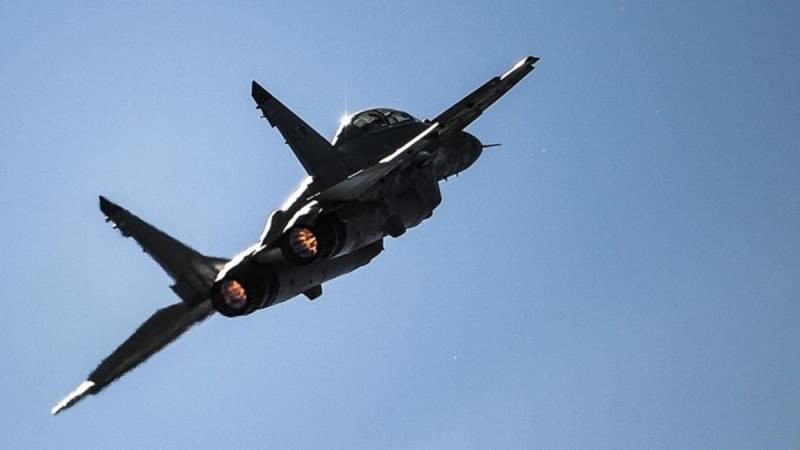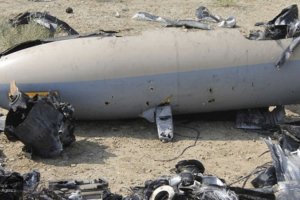
undoubtedly, announced by the Syrian Arab news agency SANA 30 May 2020 of the year, the delivery of a batch of deeply improved multifunctional fighters of the MiG-29 family to the combat units of the Syrian Air Force marked a turning point in the formation of a promising component of the rapidly aging Syrian Air Force fleet. This is not surprising, after all, until recently, the air fleet of the Air Force of our key Middle Eastern ally was represented only by a limited number of combat-ready fighter-bombers of the 3rd generation MiG-23ML / D, fighter-bombers Su-22M3 / 4, front-line bombers Su-24M, equipped with outdated on-board optical-electronic sighting systems, onboard radars "Sapphire-23" based on Cassegrain and Orion-A antenna arrays based on parabolic antenna arrays with extremely low noise immunity of receiving paths, respectively (in relation to the Su-24 and MiG-23MLD), as well as "ancient" cockpit display equipment, not to mention the lack of modern terminals for the exchange of information on tactical air and surface situations in the theater of operations via secure radio communication channels.
And despite the fact, that the number transferred to the Syrian side as part of the "package" of military-technical assistance "twenty-nines" provided to Damascus, Unfortunately, cannot guarantee the Syrian Air Force confidently maintaining air supremacy in probable air battles with dozens of F-16C / D Block multirole fighters 50/52 Turkish Air Force, as well as the F-16I "Sufa" Hel Haavir (Israeli Air Force), even a couple of links of the modernized multipurpose fighters of the "4+" generation MiG-29SMT or MiG-29M2 are quite capable of effectively patrolling the most problematic and missile-hazardous south-western air direction of the SAR.
A distinctive feature of this air route is the presence of the Antilevan mountain ranges., allowing the Israeli multifunctional fighters F-16I "Sufa" and F-15I "Ra`am "almost unhindered to penetrate into the Syrian airspace in the mode of rounding the terrain (hiding from the directional diagrams of the 9S18M2 "Dome" radar detectors and the 9S36 illumination radars of the Buk-M2E military air defense systems of the Syrian air defense forces), and then covertly go to the launch lines of low-signature tactical missiles "Delilah-AL" and planning UAB GBU-39 / B on the fortified areas of the Syrian army, strategically important military-industrial facilities and strongholds of the elite Iranian division of the IRGC "Al-Quds".
So, for example, even one link of four MiG-29SMT / M2, equipped with terminals for the exchange of information about tactical air situation APD-518 of the K-DlAE family in relation to the MiG-29SMT and E502-20 "Biryuza" in relation to the MiG-29M2, respectively (ensure the receipt of target designation from AWACS A-50U aircraft via secure radio communication channels in the frequency range from 0,96 to 1,215 GHz with further loading of target coordinates into the fighter's weapons control system), as well as advanced weapons control systems SUV-29M / 2 with software and hardware adaptation to the use of highly maneuverable medium-range air combat missiles RVV-AE (P-77), quite capable of displacing the link of the Israeli F-16Is that took off on the raid from the "blind" / blind areas of the Anti-Lebanon. Moreover, the key help for the pilots of the Syrian MiG-29SMT / M2 in a duel battle with Israeli vehicles will be not only the terminals of the asynchronous two-way data exchange line K-DLAE and "Turquoise" for receiving target designation from AWACS aircraft, but also anti-jamming multispectral optoelectronic sighting and navigation systems OEPrNK-29M (OLS-M) and OLS-UEM, capable of detecting infrared radiation from jet torches "Pratt & Whitney F-100-PW-229 "Israeli F-16I at a distance of 65-80 km to the rear hemisphere and 30-35 km to the front hemisphere.

Forbes reported, that Russia is creating a unique weapon of the future
Meanwhile, in the Western European and American media, information about the arrival of the updated MiG-29s in the Syrian Air Force combat units was traditionally met with a number of speculations regarding the ability of these machines to conduct long-range air battles and air battles at medium distances with the Israeli F-16I and stealth F-35I "Adir ", having many times more noise-immune and 1.5-2 times more "far-sighted" onboard AFAR-radars AN / APG-80 and AN / APG-81, respectively, more advanced airborne defense systems based on high-energy electronic warfare stations SPJ-40 "Elisra" (installed on F-16I), as well as AN / ASQ-239 "Barracuda" radio countermeasures and groups of transmit-receive radar modules AN / APG-81 of F-35I fighters adapted for operation in electronic warfare mode.
In particular, according to British military expert Justin Bronk, voiced in a brief analytical note for the "Forbes", even the integration into the ammunition of the updated Syrian MiG-29 modern URVB R-77 will not allow these machines to stop Israeli aviation raids on the positions of the SAA and friendly units in the provinces of Damascus, Homs and Tartus, the reason for this will be the less advanced onboard radars and onboard defense systems of the MiG-29SMT and MiG-29M2 fighters. How objective is this conclusion?
The supply of the upgraded MiG-29SMT / M2 to the combat units of the Syrian Air Force may become problem number 1 for the flight personnel of Hel Haavir
And indeed, multipurpose fighters MiG-29SMT and MiG-29M2 have far from the most advanced onboard radars N019MP and "Zhuk-M" based on waveguide-slot antenna arrays, which do not have the ability to form dips in the directional pattern in the direction of radiation sources of radio-electronic interference, and therefore, unable to neutralize the interference from the SPJ-40 "Elisra" electronic warfare stations of the F-16I fighters and "jamming arrays", 5th generation F-35I "Adir" fighters integrated into APG-81 radars. Meanwhile, Mr. Bronk did not take into account several extremely important details.
He never mentioned the presence of the above-described network-centric terminals for the exchange of tactical information K-DlAE and E502-20 "Turquoise" in the element base of the avionics of the MiG-29SMT / M2 fighters, through which the pilots of the Syrian "MiGs" can receive target designation on Israeli fighters from the "air radars" A-50U of the Russian Aerospace Forces, and then launch R-77 missiles without the need to use the N019MP or Zhuk-M radar.
Secondly, weapons control systems SUV-29M / 2 in general and radars N019MP / "Zhuk-M" in particular, like the American AN / APG-68 airborne radar(V)1-9, boast passive "HOJ" mode («Home-On-Jam», - aiming at interference), which consists in aiming at the radiation source of radio-electronic interference, in our case, on the electronic warfare systems "Elisra" and radars APG-81, working in electronic warfare mode.
As for the ammunition load of the MiG-29SMT / M2 fighters, then the open architecture of the element base of their avionics provides the ability to integrate not only the early version of the R-77 URVB with an effective range of 55-80 km when launched from medium and high altitudes, respectively, but also a more perfect medium / long-range RVV-SD ("Product 170-1"), with a range 110 km (when intercepting enemy air attack weapons into the front hemisphere) when launched from altitudes over 8-10 km. In terms of this parameter, the RVV-SD are comparable to the AIM-120C-7 American air-to-air missiles most widespread in the Israeli Air Force and noticeably (more than 2 fold) outnumber Israeli "Derby". What's even more remarkable, in addition to the standard active-semi-active radar seeker 9B-1103M-200PA, RVV-SD missiles can be equipped with an active-passive modification of the RGSN 9B-1103M-200PS with an additional passive channel for aiming at the source of electronic interference in the "HOJ" mode.
During the implementation of this mode, the 9B-1103M-200PS GOS slot antenna array can carry out passive guidance to the Elisra electronic warfare emitting station up to the flight section of the terminal trajectory section (is 3-5 km), without revealing its location for SPS-3000 radiation warning / electronic reconnaissance stations, also installed on F-16I "Sufa" fighters. The active guidance mode can be implemented in the immediate vicinity of the intercepted F-16I, leaving the pilot a minimum "window" of time for the anti-missile maneuver. The presence in the electronic "stuffing" of the MiG-29SMT / M2 of the multiplex data exchange bus MIL-STD-1553B makes it possible to integrate small-sized container complexes REB MSP-418K into the avionics of these fighters, functioning in the G-J-frequency ranges of centimeter waves and capable of disrupting with a high degree of probability the mode of "capture" of carrier aircraft by active radar seeker of AIM-120C-7 AMRAAM missiles.
Eugene Damantsev











